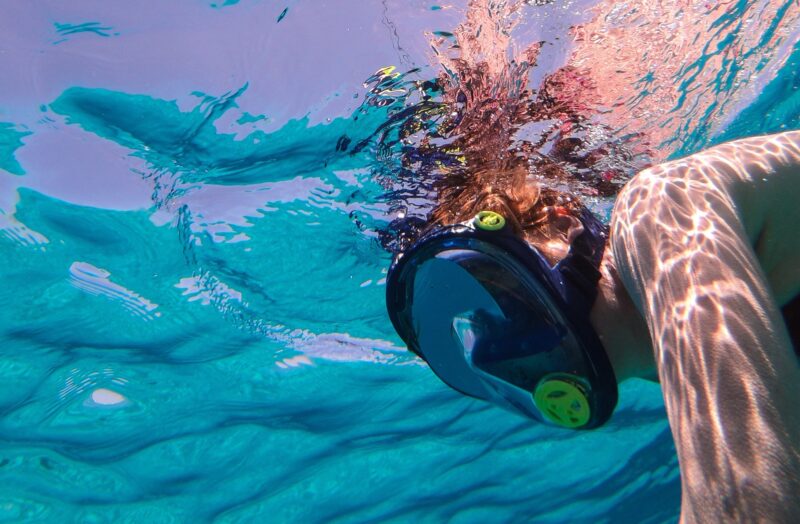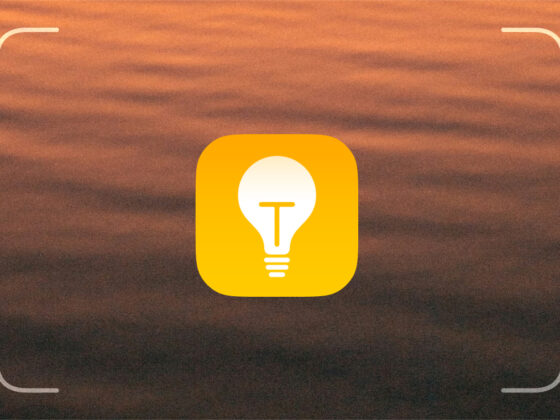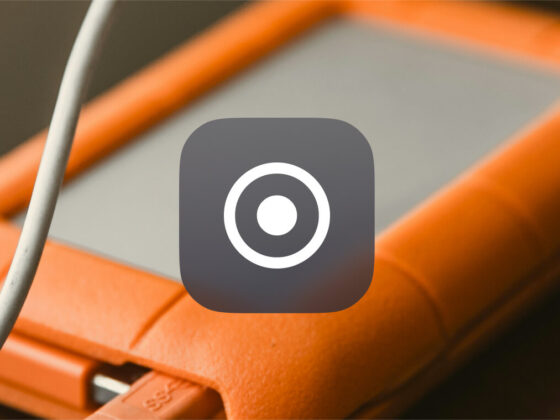You’re planning a trip to some beautiful tropical destination, and snorkeling is on your bucket list. So should you buy a new underwater camera? Or can you take underwater photos with your iPhone? The good news is that modern iPhones can absolutely take underwater photos, provided you add some extra protection before taking the plunge. Let’s dive into the fascinating world of underwater photography so you can prepare for your next adventure.
Can you take underwater photos with an iPhone?
If you own a fairly recent iPhone model, it is likely water-resistant. This means you can drop it in the toilet, spill your drink on it, or leave it out in the rain without serious repercussions. However, “water-resistant” is not synonymous with “waterproof.” So if you want to take underwater photos with your iPhone, you’ll need a waterproof case.


Here are the water-resistance specifications for iPhone models currently popular among users:
- Maximum depth of 6 meters up to 30 minutes: all iPhone models starting with iPhone 12, including Mini, Pro, and Pro Max lineup
- Maximum depth of 4 meters up to 30 minutes: iPhone 11 Pro, iPhone 11 Pro Max
- Maximum depth of 2 meters up to 30 minutes: iPhone 11, iPhone XS, iPhone XS Max
- Maximum depth of 1 meter up to 30 minutes: iPhone SE (2nd generation), iPhone X, iPhone XR, iPhone 8, iPhone 8 Plus, iPhone 7, and iPhone 7 Plus
What does an IP67 rating mean?
You may notice “IP67” when researching your phone’s water resistance. But what does it really mean? Well, electronic products can be defined by their Ingress Protection (IP) numbers to specify how they stand up to dust and water.
The first number after IP, which ranges from 0 to 6, represents protection against dust and sand. The second number ranges from 0 to 8 and represents the product’s protection against liquids. Products with an IP67 rating are 100% protected against dust and sand and have been tested to work for at least 30 minutes while submerged in up to a meter of water.
Best underwater housing for iPhone
Your iPhone is an investment, and if you want to practice underwater photography with your iPhone, some form of underwater housing is mandatory. We recommend investing in a waterproof case that has been thoroughly tested and has great user reviews. Even the most expensive underwater housings are a drop in the bucket compared to what you’ll have to pay to replace your iPhone.
The AICase Underwater Housing completely seals in your iPhone, making it totally waterproof as deep as 50 feet (15 meters) down. It also comes with a lifetime warranty, can be used with a tripod, and is compatible with all iPhone models.
Great underwater photography ideas
Once you’ve secured a high-quality underwater housing for your iPhone, you can start to explore the exciting world of underwater photography. Here are some creative underwater photography ideas to help you get started.
Marine wildlife photos
Sure, birds and insects are interesting. But there are so many more creatures waiting to be discovered under the sea, and all of them are fun to photograph! As an underwater photography beginner, you might find it helpful to focus on animals that move slowly — or not at all. Starfish, sea urchins, and hermit crabs will pose for you long enough for a nice, crisp shot. But fast-moving critters like fish are a bit more camera-shy and can result in blurry photos. Try using Burst mode for the best results.
Underwater selfies
Getting bored with the same old selfie poses? Shake things up by creating your next self-portrait underwater! The secret to a great underwater selfie is to switch to your selfie camera before going under. And remain in relatively shallow water so you have plenty of natural light to work with. Now all you have to do is smile and tap the shutter. As with wildlife photos, it’s best to take a burst of photos. That way, you can choose your favorite configuration of bubbles captured along with your smile.
Underwater patterns
Even if it’s just the ripples of sand beneath your feet, you’ll find unexpected patterns everywhere below the surf. Even the unpredictable refraction of sunlight shining through the water’s surface can create unique patterns, whether you’re shooting in a backyard pool or a coral reef. Look for odd shapes, repeating colors, and unique angles to create abstract works of art with your underwater camera.
Scenic aquatic landscapes
Just like on land, underwater landscape photography is a great way to showcase your vacation or travels. And while capturing underwater landscapes is a bit tricky, the results can be incredibly beautiful. The secret to underwater landscapes is to use the widest-angle lens available to you and to try to capture as much light as possible in your scene. Sometimes pointing your camera toward the surface is the most useful way to capture the light. You can even capture scenes above the water for a more interesting photo. Also, we have some cool tips for travel photography with an iPhone for you.
How to take stunning underwater photos
Once you have some ideas of what to take photos of underwater, it’s time to figure out some of the technical aspects of underwater photography with your iPhone. And taking photos underwater certainly has its fair share of challenges. For one thing, there’s a lot less natural light underwater, and your phone may have a hard time focusing on specific subjects.
Is an iPhone the best choice? Maybe not. But unless you’re planning on becoming a dedicated professional underwater photographer, then your iPhone will work just fine. You can always invest in a higher-quality camera that specializes in underwater photography if you develop a passion for it later. For now, here are some tips for making the most of your iPhone camera underwater.
Tip 1: Shoot in bright sunlight
Obviously, it’s not easy to find bright sunlight underwater. You’ll have the best luck in shallow water on a sunny day. But another option is to bring along an artificial light source like this diving light, which can be used for photography or video with all types of cameras.
Tip 2: Use the volume buttons as your shutter button
One of the challenges of using your iPhone for underwater photography is that your touch screen won’t work underwater. Instead, you’ll have to use your volume button as a shutter. Note that any additional settings you might want to adjust will also have to be set before you go under.
Tip 3: Use distance to focus
Because you won’t be able to lock in your focus or exposure underwater, you’ll have to do your best to predict the conditions you’ll encounter below the surface. Before going under, lock your focus on the most distant object in your frame of view. This will give you the best chance of a sharp underwater image.
Tip 4: If the light is dim, shoot toward the surface
You can’t predict the lighting conditions for underwater photography, but you can always assume that shooting toward the surface will give you the most light to work with. You’re also likely to get some interesting images when hints of the surface world are visible just above you.
Editing your underwater pictures
Part of the challenge of experimenting with photography underwater is learning how to properly edit underwater photos in addition to taking them. There are a lot of logistics at play with underwater photography, and some problems can only be corrected with post-processing. Here are some tips for editing your underwater photos on your iPhone.
Tip 1: Warm up cool photos
Many a photographer has taken a batch of seemingly beautiful photos, only to get home and ask, “Why do my underwater photos green?” Shooting underwater brings out the cool tones in just about everything you try and capture. The best solution is to use the temperature slider in your editing software to warm things up.
Tip 2: Increase the exposure or brightness
The exposure or brightness slider in your photo editing app will help reintroduce some light into an otherwise dark scene. But we recommend doing this in moderation because upping the exposure will also introduce noise into the photo that can take away from the overall effect. Add enough brightness to make the scene recognizable, but keep in mind that underwater scenes are meant to be dark.
Tip 3: Up the saturation on your photos
The brighter the light underwater, the more accurately you’ll be able to capture colors. But since you often won’t have much light to work with, you will likely have to up the saturation during post-processing. If you’re using an app like Adobe Lightroom, you can change the saturation of individual colors for a more realistic look, but even the most basic photo editor will allow you to increase the overall saturation.
Ready to explore the fascinating world of underwater photography? Whether you’re heading to the pool for an afternoon in the sun or a weekend in the tropics, don’t forget a waterproof case for your iPhone so you can capture the world beneath the waves.



